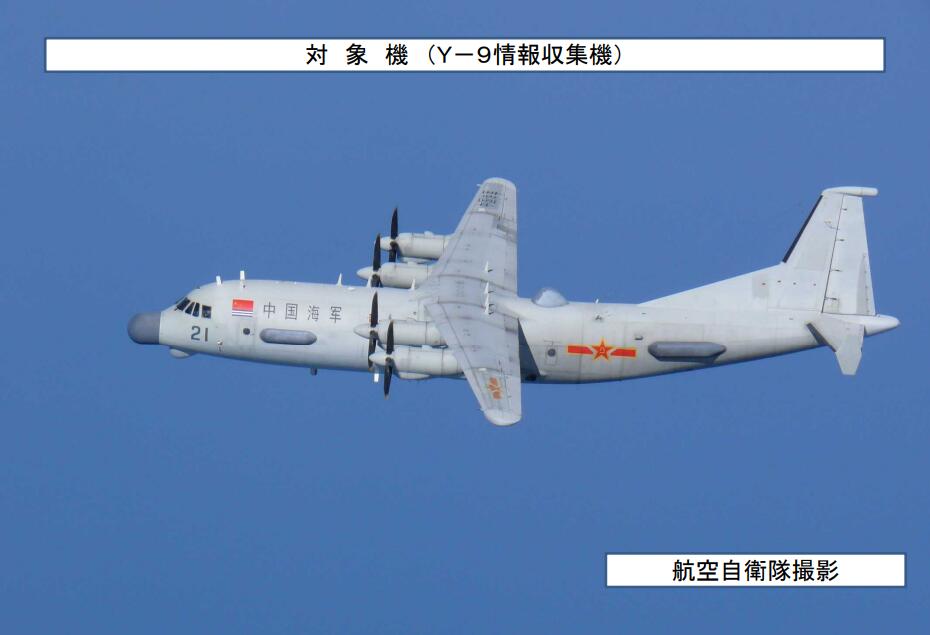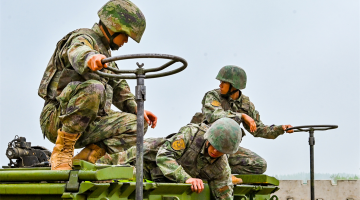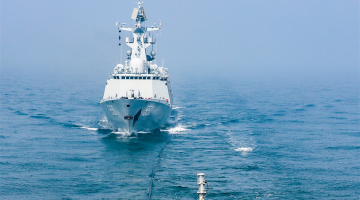By Guo Yuandan

According to Yonhap News Agency, on October 29, a Chinese military aircraft flew into the Korea Air Defense Identification Zone (KADIZ) after "pre-announcing its flight path and purpose". A Chinese military expert told reporters that the Chinese side has notified the ROK side of its flight information through a bilateral military hotline. This is the first time that the Chinese military aircraft to notify the ROK side of its flight plan in advance, which has just reflected their friendly relationship at present.
The report of Yonhap News Agency mentioned that "some relevant person said that the Republic of Korea (ROK) Army had tracked and monitored the Chinese fighter jet before its entrance, and the Chinese side had notified its flight information through the military hotline between the two countries, but the content of the call were not to be disclosed. The Chinese side notified the flight in advance. The practice that the Chinese side notified the Korean side of its flight information before entrance is in stark contrast to that of the past." According to the Korea Times report, there is precedent for notifying the Korean after the Chinese aircraft has entered the KADIZ.
Yonhap said that the ROK military believed that this change may be related to the recent resumption of the national defense strategic dialogue between China and the ROK in Beijing after five-year suspension. The ROK and China are set to hold an annual vice-ministerial-level bilateral meeting, namely the ROK-China Strategic Defense Dialogue, the highest-level meeting between the two Ministries of National Defense. It was held in Beijing for the first time in 2011, and has been held regularly in Seoul and Beijing in turn every year since then. Since the US deployment of the "THAAD" anti-missile system in the ROK, the ROK-China relations have been strained, and in turn the ROK-China strategic defense dialogue got suspended in 2015. But in that year, the two sides have set up a military hotline between the ROK's First Master Control and Reporting Center (MCRC) and the PLA’s Northern Theater Command. During recently resumed strategic defense dialogue in this October, the ROK proposed to set up a hotline to further enhance the national defense exchanges and cooperation between the two countries. Currently, the two sides are negotiating to open the second direct military hotline between the ROK’s Second MCRC and the PLA’s Eastern Theater Command.
Fu Qianshao, a Chinese Air Force expert, said in an interview on Tuesday that according to the ROK media reports, the meaning of "response to the notification of flight information" is different from that of "prior notification of flight information". The air defense identification zone is a virtual boundary set to cope with the violation of airspace by other countries, but not a national airspace. Aircraft that enters the zone is not required to notify the relevant country in advance.
He said that the civil aircraft will notify the administering country of the air defense identification zone in advance; while for military aircraft, the notification will only be conducted in advance if the relevant countries are in friendly relations. In addition, China, the ROK, and Japan all have their own air defense identification zones, which have overlapped somewhat. Therefore, it’s quite natural to not notify the other country when conducting patrol flights in its own identification zone. This time, the fact that the ROK military learned the aircraft situation from the Chinese side through the hotline and the Chinese side responded accordingly just reflects the detente of the bilateral relations and a friendly situation between the two parties at present.
Disclaimer: This article is originally published on huanqiu.com, and is translated from Chinese into English and edited by the China Military Online. The information, ideas or opinions appearing in this article do not necessarily reflect the views of eng.chinamil.com.cn.









